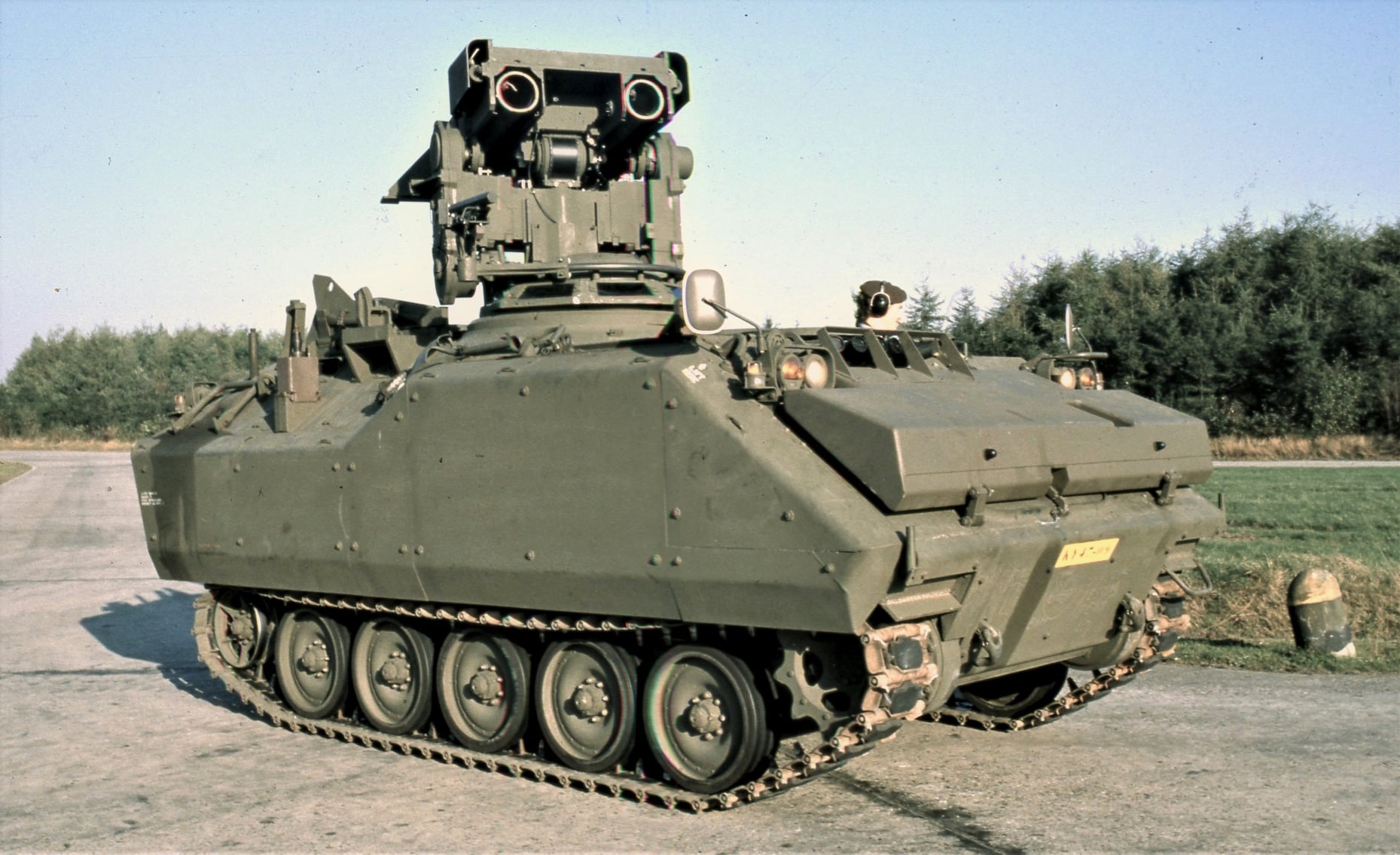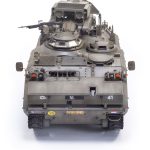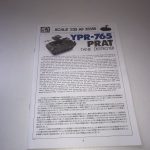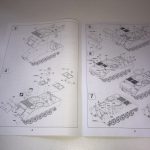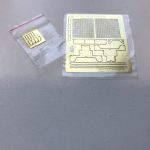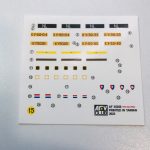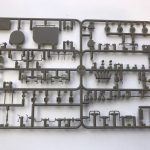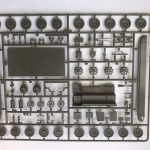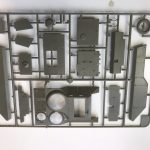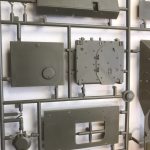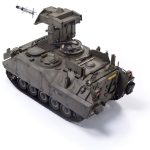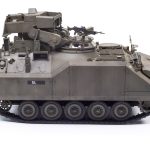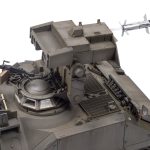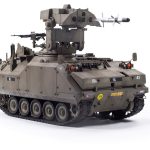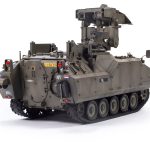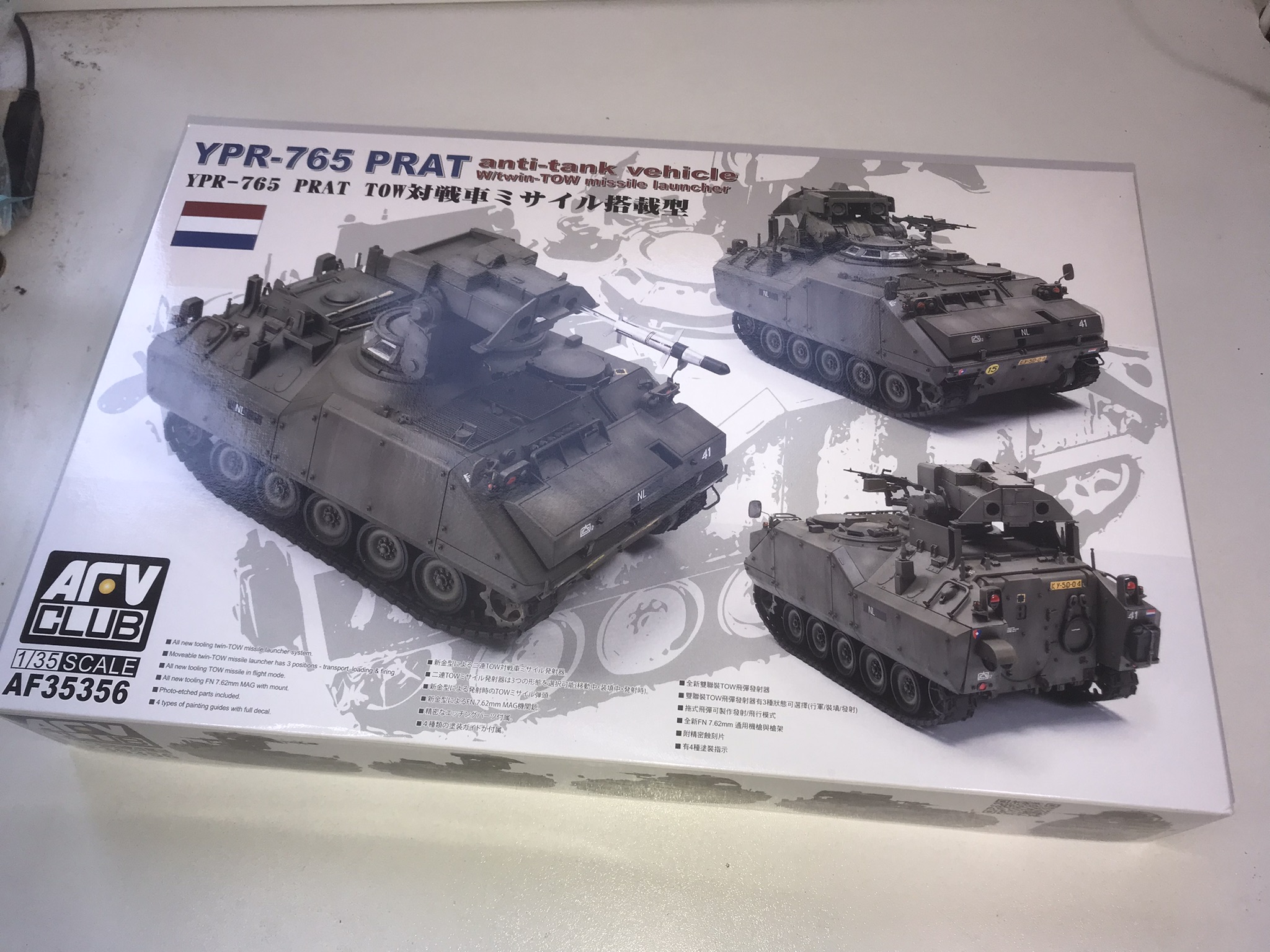
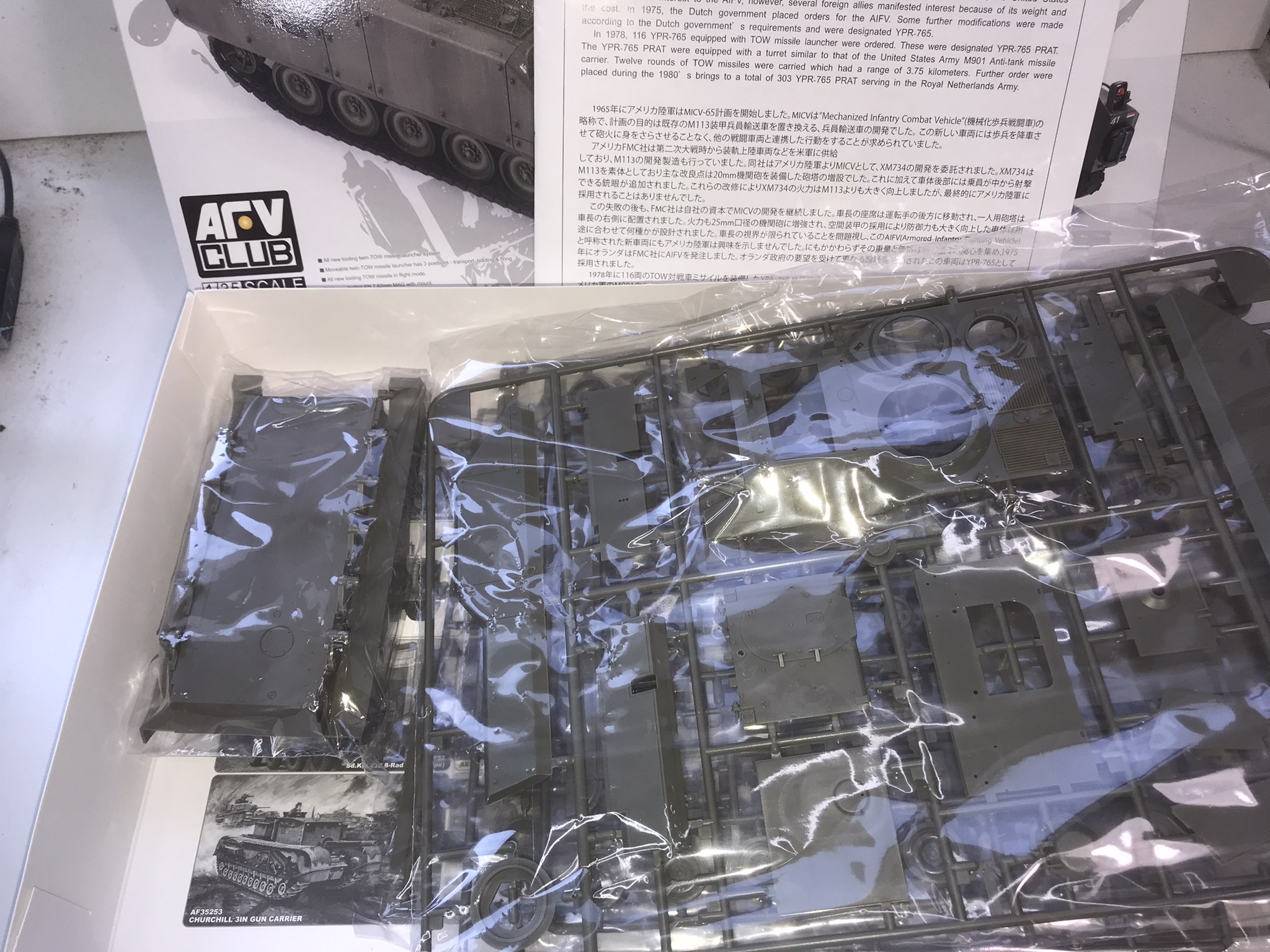
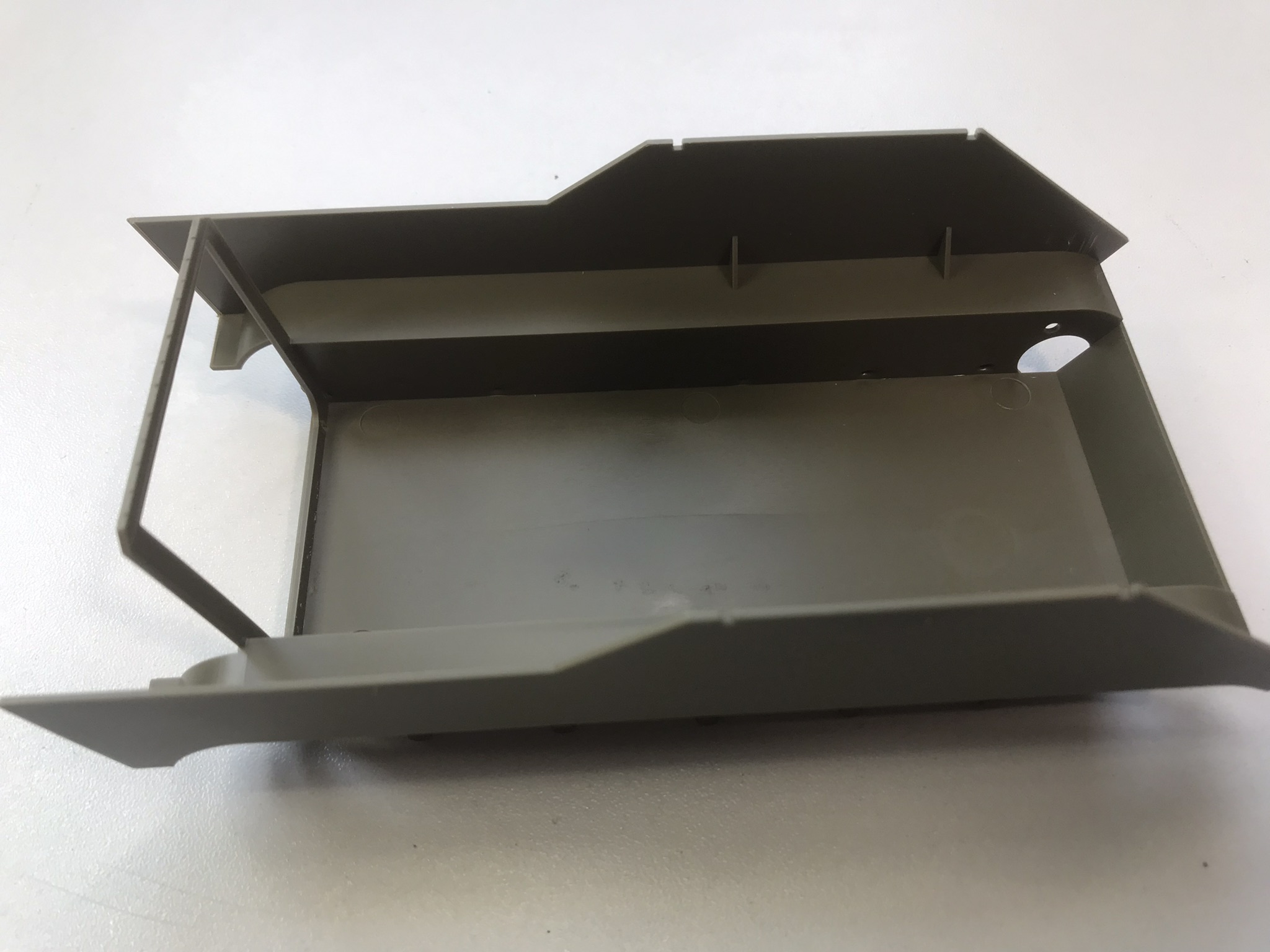
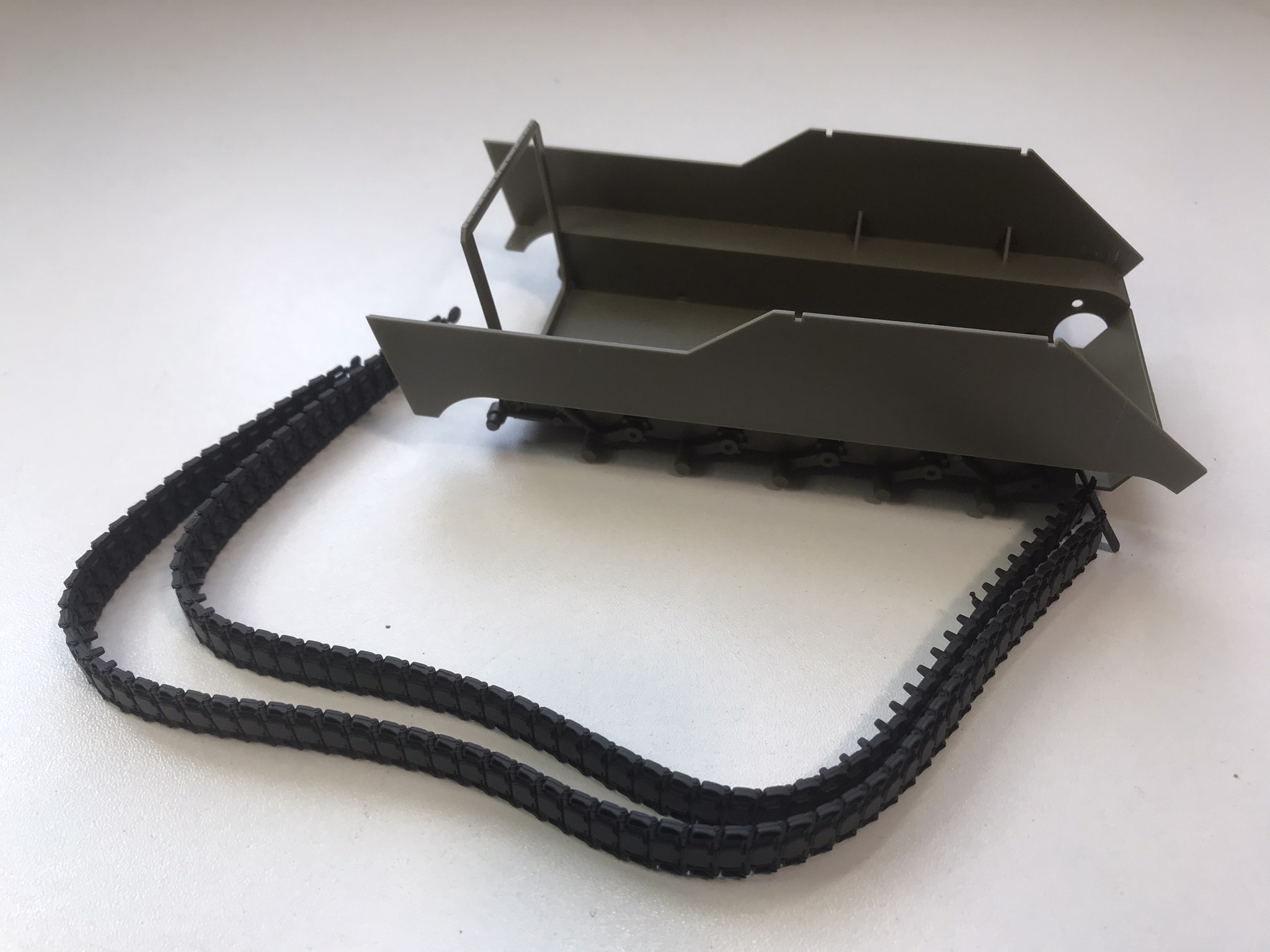
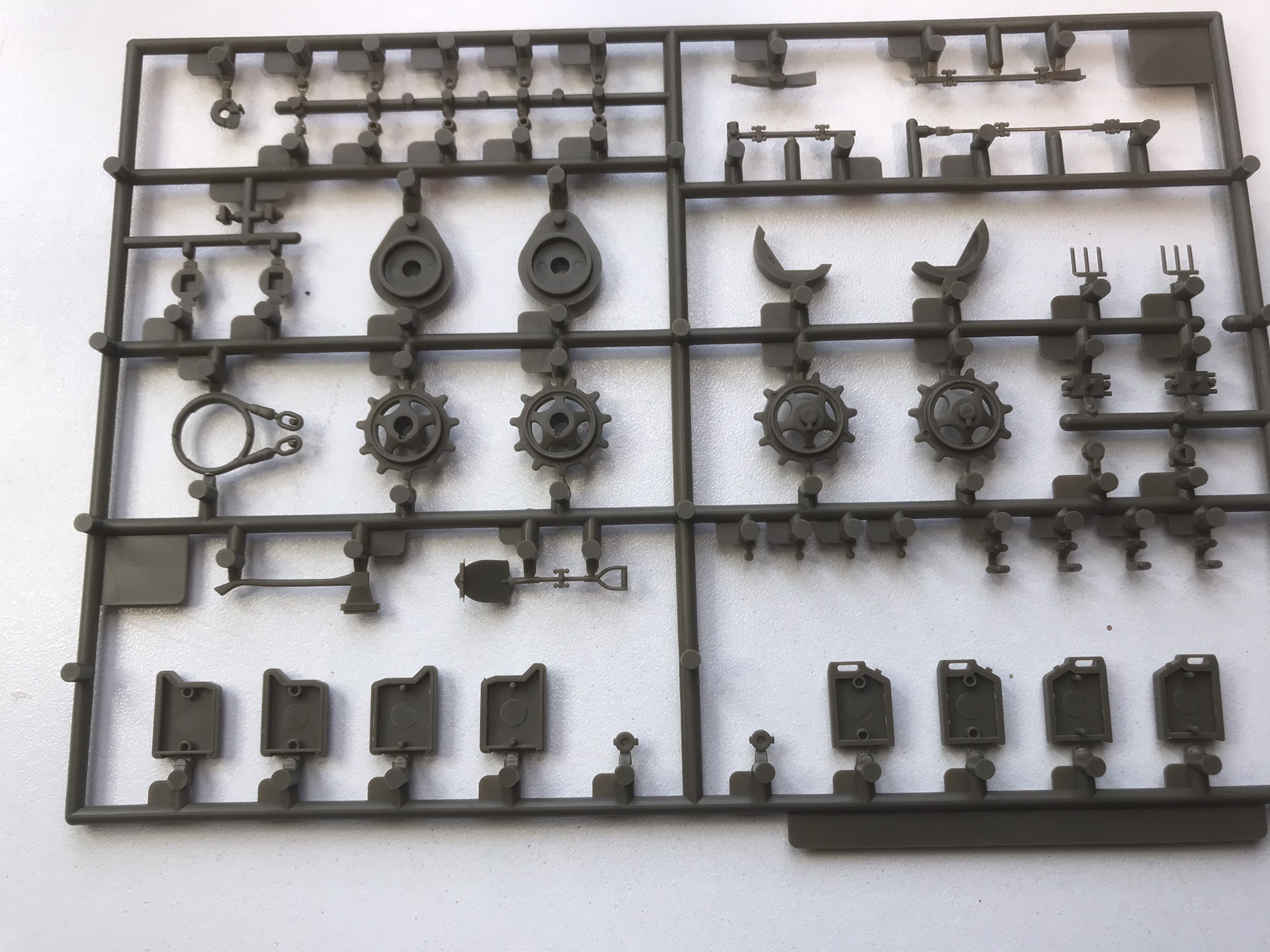
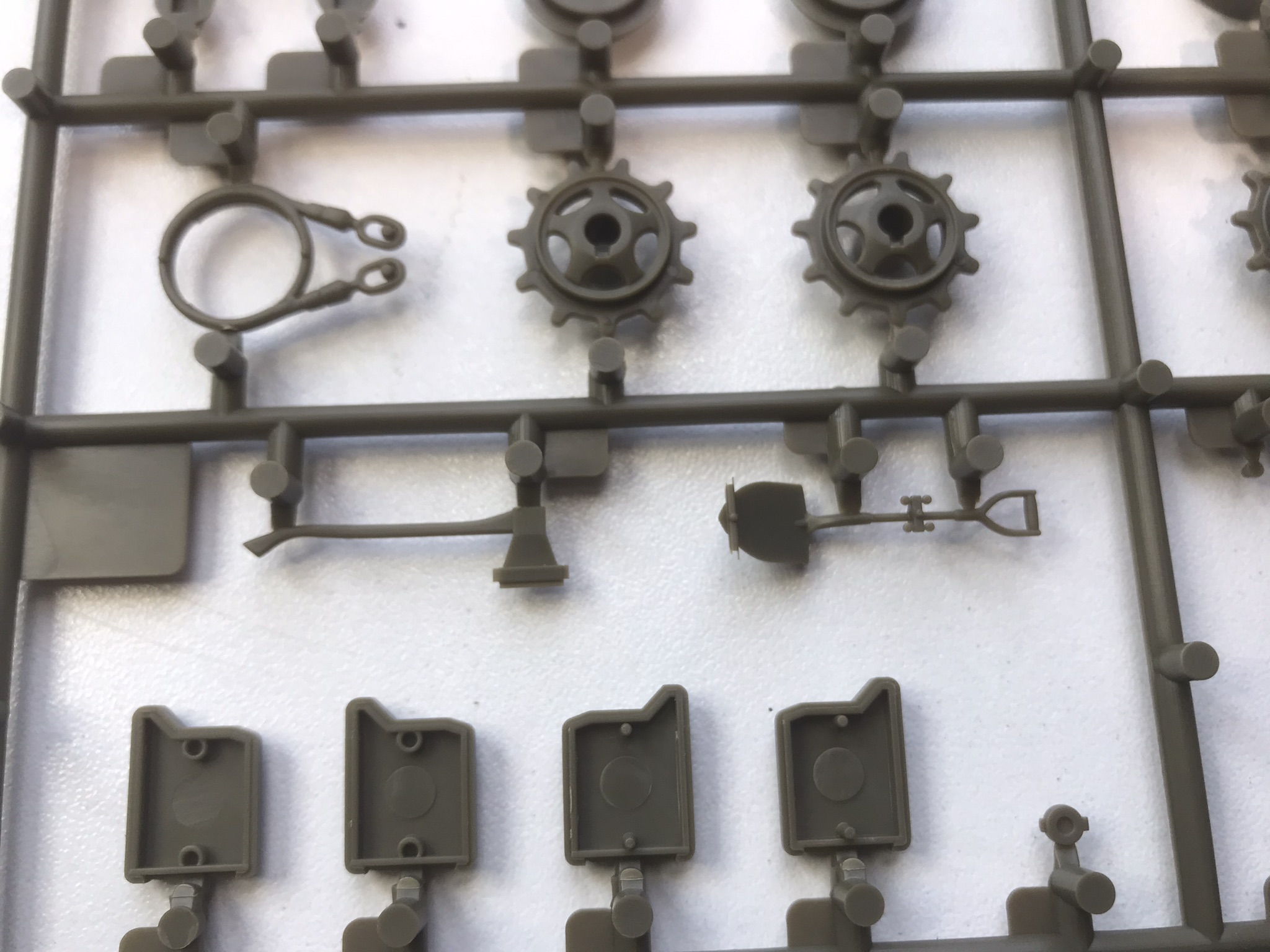
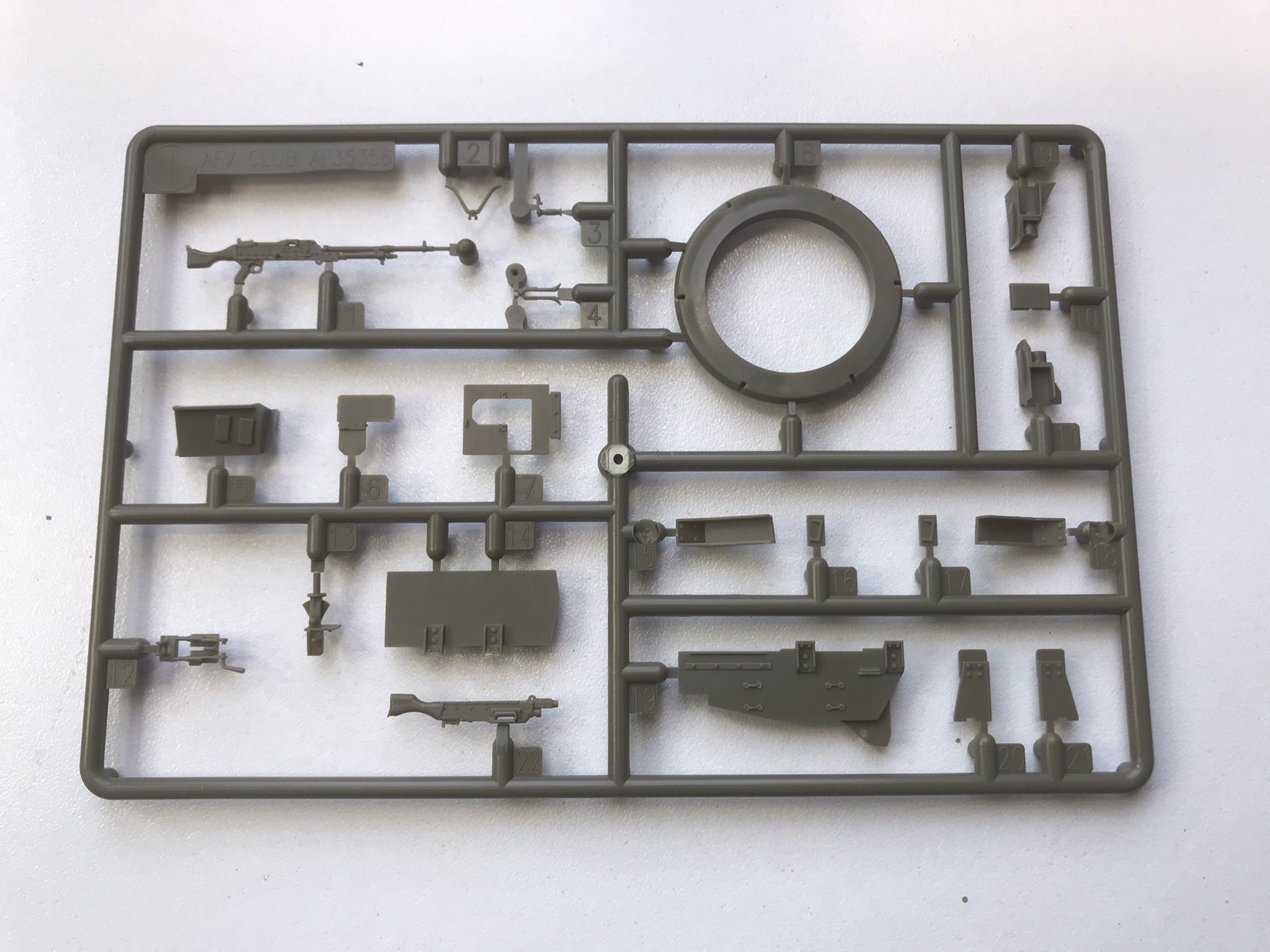
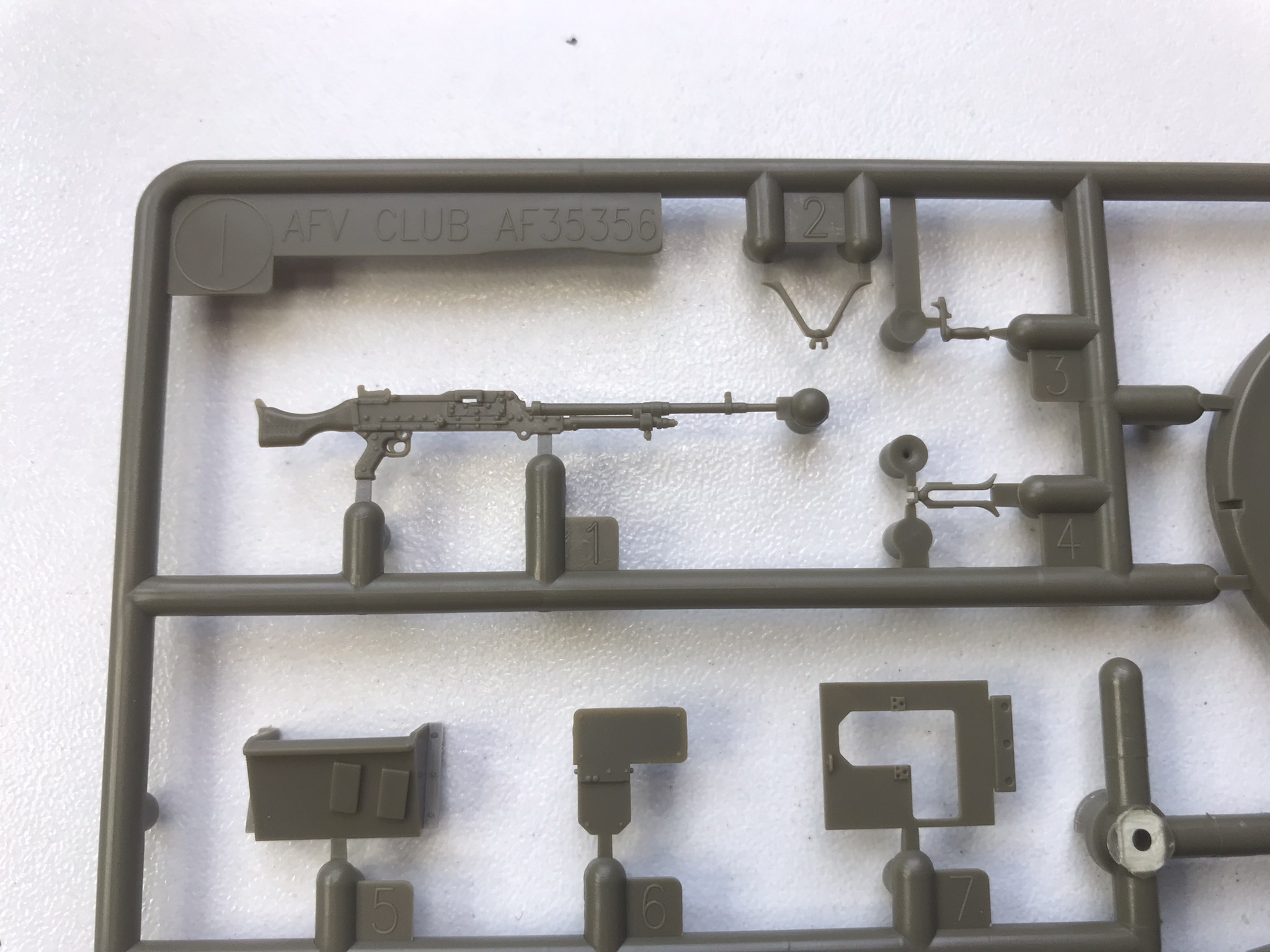
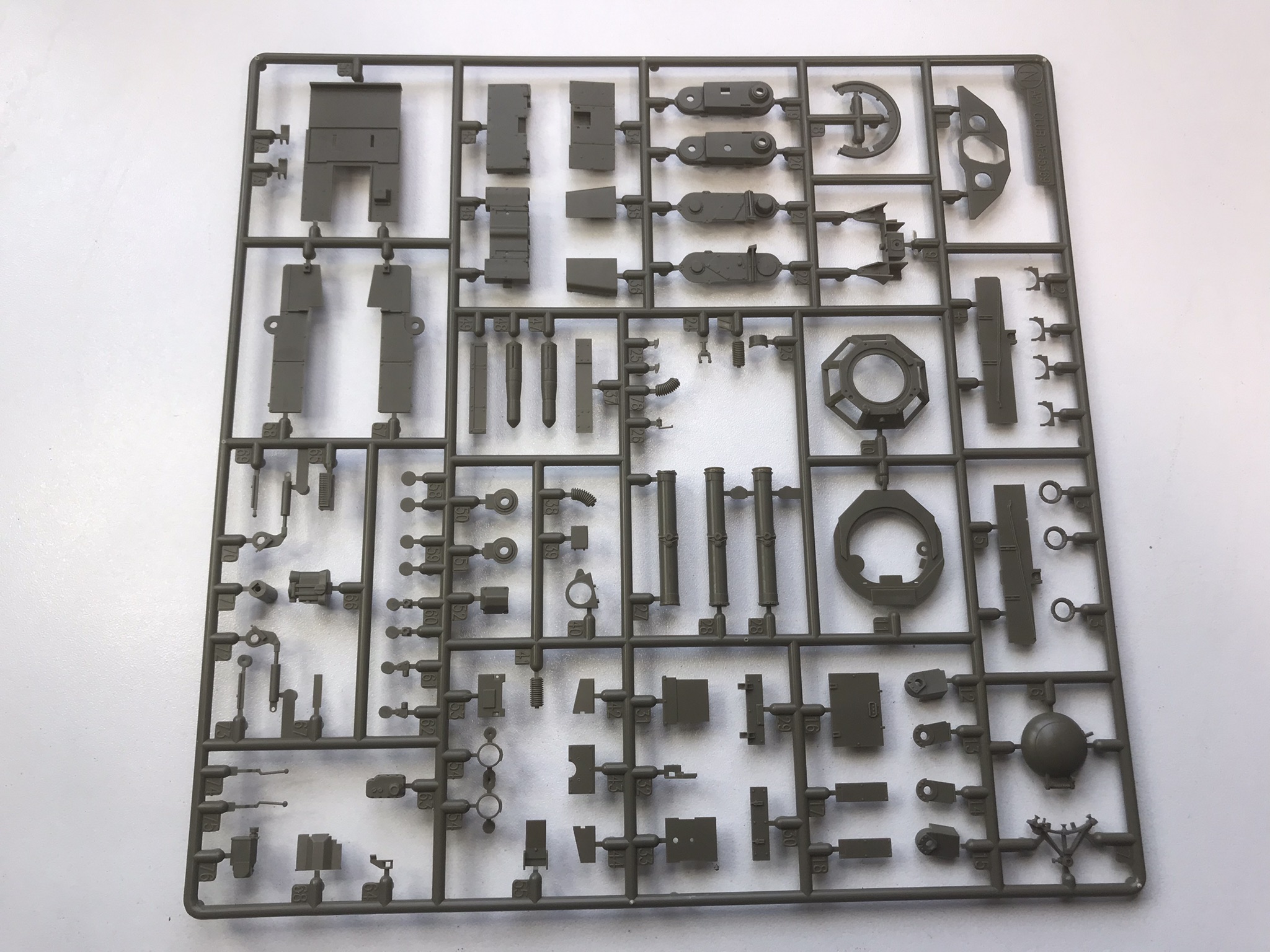
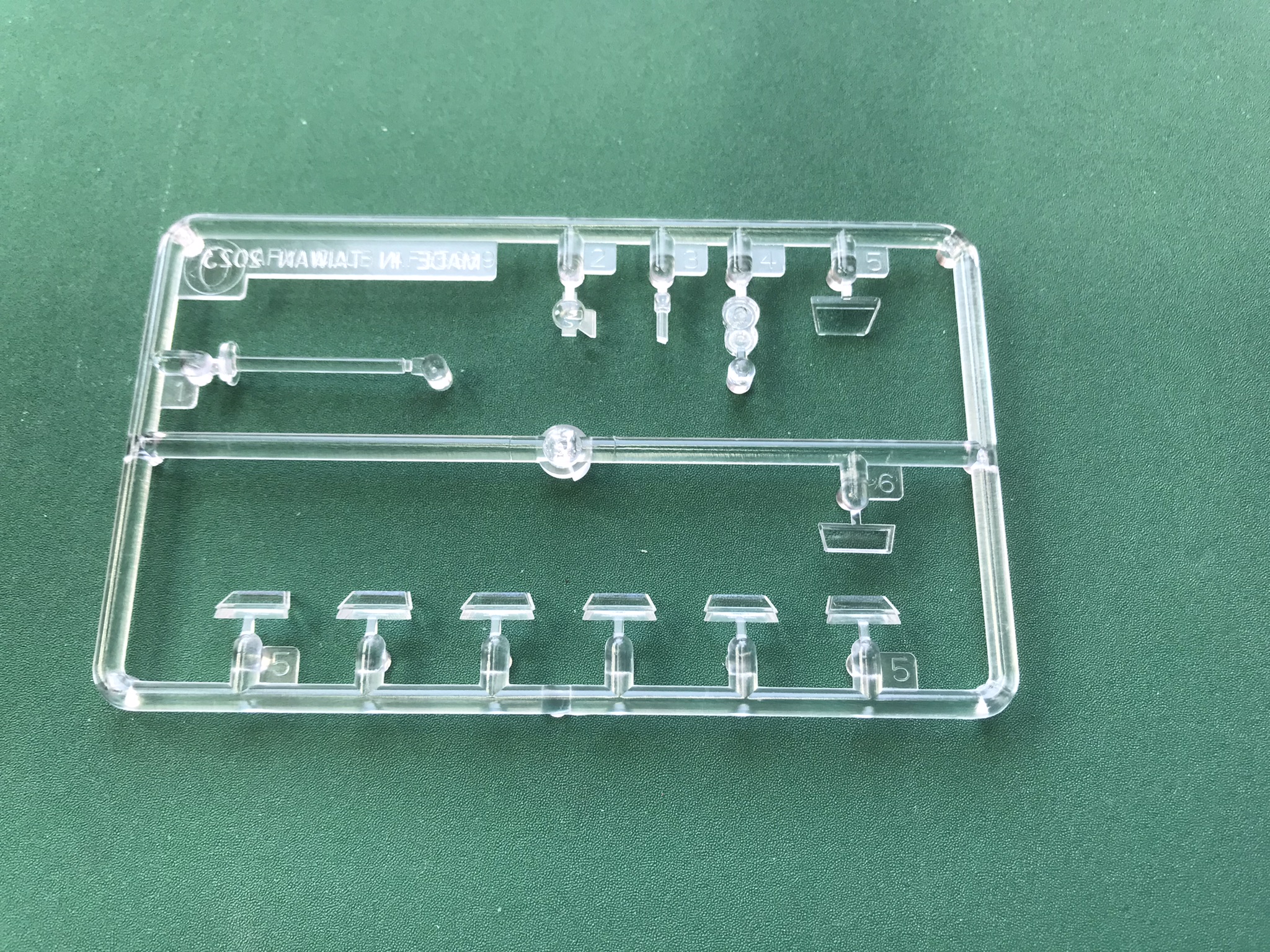
YPR-765 PRAT Royal Netherlands Army
ModelFan Nederlandse versie
Nederlandse versie
first impression
AFV Club
nr. AF35356
1/35
Injection moulded model
parts, 1 photoetch set, 1 decalset
price between euro 47,00 and 57,00
The YPR was developed in the United States in 1965 by FMC Corporation under the
name XM765, as one of prototypes for a future armoured infantry fighting
vehicle.
The XM765 was based on the M113A1, improved with a closed single-person turret
and firing gates, which allowed the infantrymen to fire from the vehicle. The
hull is welded aluminium, with armoured steel plates bolted to the front and
sides. The spaces between the Armor plates are filled with polyurethane foam,
which gives the vehicle extra buoyancy. When the vehicle is floating it is
powered by the tracks, which are equipped with small blades. The diesel engine
of the two-stroke vehicle is located in the front right of the fuselage.
Underneath the large bow wave baffle plate at the front of the vehicle is a
hatch that provides access to the commanded steering and brake differential and
the drive shafts. The engine is identical to that of the M113A1, except for the
larger radiator and turbocharger. To the left of the engine is the driver, who
has a roof hatch that opens to the right. The driver has four M27 periscopes,
the front of which can be replaced by a passive-infrared night vision
periscope. Later, the driver was given HV night vision goggles. The vehicle
commander sits directly behind the driver and has his own turret that can
rotate all the way around. The dome has five periscopes; four of the M17 type
and one that magnifies up to six times.
There is room in the back of the vehicle for seven infantrymen. Six sit back-to-back:
three on the left and three on the right. The seventh sits on a folding chair
between the vehicle commander and the tower. They have two M17 periscopes on
each side, and one M27 periscope at the rear. Like the M113, the YPR-765 has a
large cargo hatch at the top of the roof and a lowerable hatch with a small
door at the rear. All YPR-765s (except the YPR-GWT casualty transport) are
equipped with a smoke canister launcher with six launchers.
The U.S. Army did not include this specific prototype in its armament, after
which manufacturer FMC further developed the vehicle as its own project and
sold it to several other countries (including the Netherlands, South Korea and
Turkey).
In 1973, the Royal Netherlands Army placed a first order for 880
Armoured Infantry Fighting Vehicles (AIFVs) with FMC to replace a number of
obsolete vehicles: first the French AMX PRI, then the Dutch YP-408 and the
American M113. These three vehicles had entered the 1960s. The armoured tracked
vehicle was then imported into the Netherlands in 1977 and renamed YPR-765
(where the Y stands for the Netherlands, P for Armor and R for Track). The last
YPRs were delivered in 1989. From 2000, the vehicles were modernized to version
YPR-765 A1. The A1 variants are easily recognizable by the three-color camouflage
pattern. The Royal Netherlands Army has had quite a few versions in service,
including the PRAT version
The PRAT version
The Armoured Anti-Tank version is a tank destroyer. It is equipped with
an M27 turret containing two TOW anti-tank missile launchers. The vehicle also
has an FN MAG machine gun. The vehicle has room for ten more TOW rockets. The
launcher must be manually loaded from underneath armour. The M27 tower is the
same as the one on the American M901 ITV (Improved TOW Vehicle) "Hammerhead".
At the top of the tower is the targeting equipment for both day and night
(AN/TAS-4(a)). The missile control system is also located in the tower. The
crew consists of four people (in wartime): commander, driver, gunner and
loader. Inside the vehicle is a separate tripod carriage, which allows a TOW to
be set up outside the vehicle. Furthermore, there are suspension brackets for
two M136 AT4 portable anti-tank missiles. While driving, the tower is folded on
the vehicle. One cannot drive with the TOW missiles in firing position. The TOW
is guided by a wire, which requires the gunner to keep their sights on the
target. In total, the Royal
Netherlands Army had 303 YPR-PRAT in service
The AFV Club model has been announced for quite some time and recently the kit
became available. I missed the first round so I had to wait for the second
round of import and I decided to get one to prevent it from suddenly being sold
out, that AVF Club is daring to bring this Dutch version to the market is
great, but it will not be an immensely large edition.
The AFV model is for the first (or early) series of the YPR-765. This makes
sense because all previous YPR models from AFV are also (see the timeline at
Scalemates) such as the 35016, 35S14 (NL) and the 35119 (NL-SFOR). AFV Club claims
"new tooling" on its box, which is only partly true because they only
added frames to build this NL PRAT version. Scalemates mentions this as
"new parts" The manufacturer also indicates this neatly in the parts
list where you can see that there are frames of the 35002, 35S14, 35016 and the
35369, added is a frame with the MAG machine gun and attachment and of course
the decal set. For the second later A1
you miss the stowage wire racks at the back, wire cutters on the front and the
Diehl tracks to mention the most important.
There are already some aftermarket solutions for this, by the way.
In this model, all injection moulded frames are individually wrapped in
cellophane, including the clear parts. In my opinion neatly taken care of! The
photoetch parts are packed together with the decal set, but separately in
plastic bags. In total there are seven frames, a separate fairing section and
plastic/rubber tracks this could be better. The parts don't have flash, and I
haven't come across any annoying ejection pins anywhere. Neatly cared for as
with the other models of the YPR-765 from AFV Club.
The back hatch is moulded in one piece, the door is cast in. So, it is not possible
to mount the door in an open position and show some interior. The hatch itself
cannot be fitted in the open position. The solution for this is to use the hatch
and door from Perfect Scale. The hatch on the upper deck is separately attached
to a frame and can therefore be mounted in an open position. It is essential then
that you construct an interior.
On the box and in all advertisements, the model is depicted firing a TOW
missile, which you may actually be able to imitate with the model. Personally,
this doesn't really appeal to me. If you do show the firing, I think you should
do it as realistically as possible with the accompanying effects, but to each
his own, right? That's the great thing about modelling!
The TOW launcher can be placed in three different positions. Firing position,
reload position and stored position. If I understand the manual correctly, the
idea is that the launch pad can move to get into these positions, but I do see
that different parts have to be fitted, but I think they are replaceable. This
is also a nice option for a possible diorama. Also included are the empty
cartridges of the TOW missiles to simulate that TOWS have been fired. No antennas or antenna wires are included,
for this the "stretched sprue" method is indicated in the instructions.
Because AFV uses previously designed frames, the errors that are in these are
of course included in this PRAT version. You won't get a flawless PRAT with
this model, but you can do whatever you want about it, including an interior.
To build a super PRAT I would like to advise you to read the build of
priegelmaster Walter Jonkers on the Twenot forum "Fiddling with a
YPR-PRAT: Shutters open and lights on". This is a build from 2021 based on
the then available AFV Club YPR-765 and not this one, but this article
flawlessly shows what a PRAT model should look like including a fabulous
interior, really worth it.
The manual is in black and white with the colour indications of the various
early versions at the end. As already
indicated, this is not the A1 version. In other words, the simple olive drab
scheme. The construction is
described in 28 steps. The versions that are available from the decal sheet
are:
- 12th Armoured Antitank Company – 12th Armoured Infantry Brigade KY-50-04
- 12th Armoured Antitank Company – 12th Armoured Infantry Brigade KY-50-55
- 48th Armoured Infantry Battalion - 11th Armoured Infantry Brigade
KY5028
- 17th Armoured Infantry Battalion – 13th Armoured
Infantry Brigade KY-50-40
The decal sheet. Well, that's where things went wrong with the flags.
Unfortunately, the red, white, blue has shifted, minimally, clearly visible with
a magnifying glass. Also decal 11 that should be on the door in the rear hatch
is not centred. Other than that, the sheet looks acceptable.
Conclusion
Once again, AFV Club has made us happy with a Royal Netherlands Army model. The
quality of the model offered is good, based on the previously released models
of the YPR-765 by AFV. So, the mistakes come along. This is the first/early
version. If you want to build the A1 version, you have to rebuild. You can
score stowage racks and wire cutters from Sylly's Miniature Models and Diehl
tracks from Perfect Scale. Perhaps more aftermarket products/decals will be
offered in the coming period and yes, 3D printing also offers more and more
possibilities.
Highly recommended for any modeler interested in Army models, but in general a specific
model to have in your display case.
